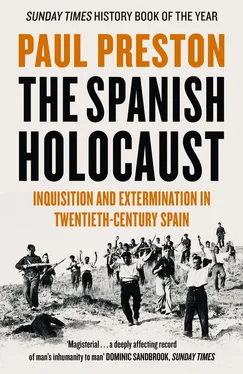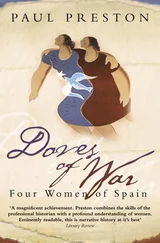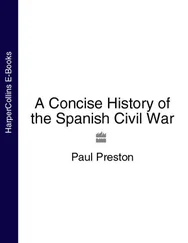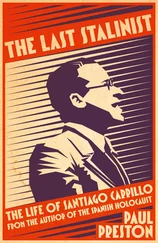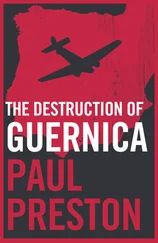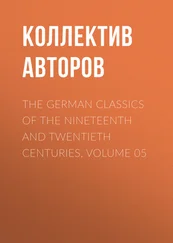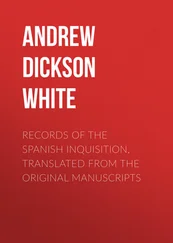In opposition, Largo Caballero responded to rank-and-file distress with empty revolutionary slogans. However, the fact that he had no concrete plans for an insurrection did not diminish middle-class fears provoked both by his statements and by the anarchist commitment to revolutionary violence. In fact, when, on 8 December 1933, the CNT naively called for another nationwide uprising, the Socialists ostentatiously stood aside. In the event, only a few traditionally anarchist areas responded to the call. Despite CNT supporters in Asturias and most of Andalusia standing aside, there was a sporadic wave of violent strikes, some trains were derailed and Civil Guard posts assaulted. In Galicia, the Rioja, Catalonia and Alicante, the insurrectionists were easily suppressed and several hundred prisoners were taken. Throughout Spain, 125 people were killed, sixteen from the forces of order, sixty-five anarchists and forty-four innocent bystanders. 3
On 9 December at Bujalance in the highly conflictive province of Córdoba, there was an echo of Casas Viejas. Tempers were running high because the landowners were flouting agreements on wages and conditions. Anarchist peasants took over parts of the town and tried to seize the town hall. The Civil Guard replied by attacking any houses whose doors were not left open. In thirty-six hours of fighting, a Civil Guard, two anarchists, four innocent civilians, including a woman, an eight-year-old child and an elderly landowner, were killed. Two alleged ringleaders were captured in nearby Porcuna and shot by the Civil Guard ‘while trying to escape’. Two hundred prisoners were taken, many of whom were badly beaten by the Civil Guard. The Civil Governor, Mariano Jiménez Díaz, blamed the events in Bujalance on the landowners for ignoring the work agreements and amassing firearms. 4
The scale of social hatred in Córdoba can be deduced from the testimony of a union leader from Baena:
The same owners who would spend 400,000 pesetas on a shawl for the statue of the Virgin or on a crucifix for the Church stinted the olive oil for the workers’ meals and would rather pay a lawyer 25,000 pesetas than an extra 25 cents to the day-labourers lest it create a precedent and let the workers get their way. In Baena, there was a señorito [master] who put cattle in the planted fields rather than pay the agreed wages to the reapers. A priest who had a farm, when the lad came down to get olive oil, had made dents in the tin jug so that it would hold less oil.
The union official from Baena went on to comment on the intransigence of the employer class when it came to getting any improvement in the awful situation of the farm labourers:
They had power, influence and money; we only had two or three thousand day-labourers behind us and we constantly had to hold them back since the desperation of being unable to feed their children turns men into wild animals. We knew that the employers, well protected by the forces of order, were not bothered if there were victims, because they just bribed the officials to change the paperwork and make black white. In fact, they were happy to see violence because it was a welcome warning to any rebels of the danger of leaving the straight and narrow.
His own experience as a young man was revealing:
The few times (two or three) that I went with a committee to discuss conditions with the employers, the only issue on the table was wages; there was no question of negotiating food or working hours, since everything was considered to be included in the clause ‘Usage and customs of the locality’, which simply meant to work until your back broke, from sun-up to sun-down, or for hours expanded by the arse-licking foremen from when you could just about see until it was too dark to see a thing. I remember in one heated discussion a caci que called me a ‘snot-nosed kid recently out of the shell’ and said that if my father knew how stupid I was, he wouldn’t throw down fodder for me. This exhausted my patience and I got up and said to him as seriously as I could: ‘It is true, Señor, that on many occasions I have had to eat, not cattle feed, but the remnants of fried bread that you throw out for your dogs, a very Christian deed in a town where the workers’ children are dying of hunger.’ 5
There were a number of violent incidents involving the CNT in the western region of Extremadura, an area dominated by large estates or latifundios. In the province of Cáceres, two churches were set alight in Navalmoral de la Mata. 6However, since the Socialist Landworkers’ Federation (FNTT) was not involved, the more southerly province of Badajoz was largely unaffected with the exception of Villanueva de la Serena. There, an infantry sergeant, Pío Sopena Blanco, together with eight other anarchists like himself, took over an army recruiting office, killing two Civil Guards and wounding another. They were surrounded but, instead of waiting for them to surrender, the building was bombarded with heavy machine-guns and artillery by combined units of the Civil Guard, Assault Guards and the army. Pío Sopena and two others were killed in the attack and the six others were shot in cold blood. Although local Socialists were not involved, the Mayor and the officials of the Casa del Pueblo (workers’ club) were arrested. The Casas del Pueblo in Villanueva and five other pueblos were shut down. 7
These violent incidents involving the CNT diverted attention from the growing problem of malnutrition. This was not only because landowners were slashing wages and refusing work to union members but also because of price rises in basic necessities. After the new Radical government removed price control on bread, the cost had risen by between 25 and 70 per cent. Demonstrations of starving women, children and old people calling for bread became a frequent sight. 8At the end of 1933, then, the Socialist leaders faced a rising tide of mass militancy, fed by the employers’ offensive and bitterness at the perceived unfairness of electoral defeat. Dismayed by the right’s determination to destroy what they regarded as basic humanitarian legislation, ever more members of the trade union movement and the Socialist Youth (Federación de Juventudes Socialistas) had come to believe that bourgeois democracy would never allow the introduction of even a minimal social justice, let alone full-blown socialism. Fearful of losing support, Largo Caballero reacted by heightening his revolutionary tone still further. In mid-January 1934, he declared that to transform society it was necessary to arm the people and disarm the forces of capitalism – the army, the Civil Guard, the Assault Guards, the police and the courts: ‘Power cannot be taken from the hands of the bourgeoisie simply by cheering for Socialism.’ 9
This strident rhetoric was not backed by any serious revolutionary intentions, but, replayed via the right-wing press, it could only provoke middle-class fears. Largo Caballero’s verbal extremism pandered to rank-and-file dissatisfactions but aimed also to pressure President Alcalá Zamora into calling new elections. It was dangerously irresponsible. If the President did not respond to pressure, the Socialists would be forced either to fulfil Largo Caballero’s threats or back down and lose face with their own militants. Since there was little possibility of implementing his threats, the consequence could benefit only the right.
Largo Caballero’s ill-considered rhetoric reflected both the aggressive assault on social legislation that had followed the right-wing electoral victory and fears of fascism. He felt that he had to respond to workers’ delegations from the provinces that came to Madrid to beg the Socialist Party (PSOE) leadership to organize a counter-offensive. 10At the same time, he and others suspected that not only the Republic’s legislation but also their own persons were in danger from a possible fascist coup. On 22 November, the outgoing Minister of Justice, Fernando de los Ríos, informed the PSOE executive committee of plans being prepared for a rightist coup involving the arrest of the Socialist leadership. 11Throughout November and December, the Socialist press frequently published material indicating that Gil Robles and the CEDA had fascist ambitions. Reprinted documents included the CEDA’s plans for a citizen militia to combat revolutionary activity on the part of the working class. Others showed that, with the connivance of the police, the CEDA was assembling files on workers in every village, with full details of their ‘subversiveness’, which meant their membership of a union. The appearance of the uniformed militias of the CEDA’s youth movement (the Juventud de Acción Popular) was taken as proof that preparations were afoot to establish fascism in Spain. 12
Читать дальше
